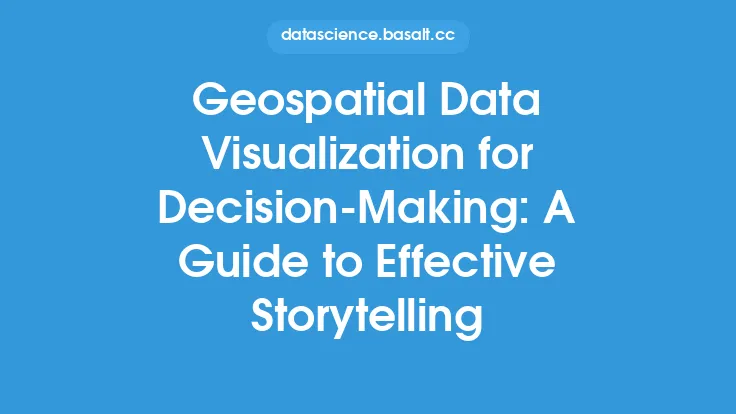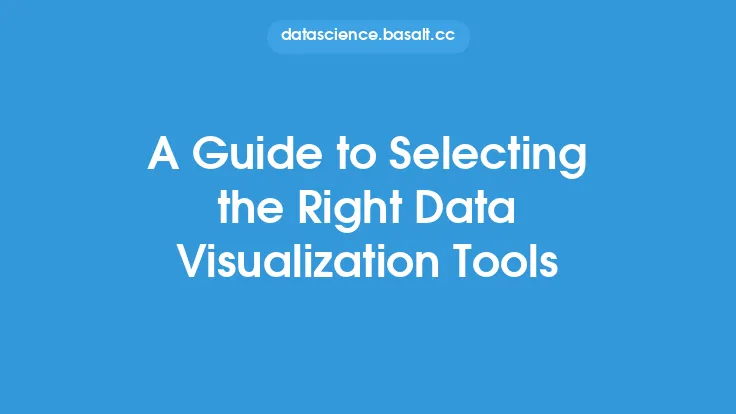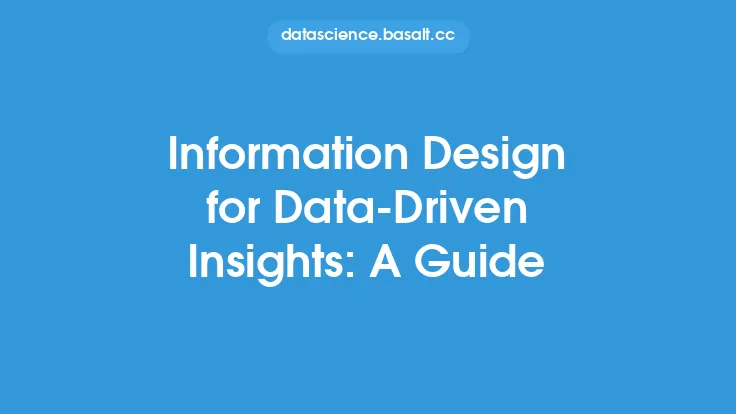Data visualization is a crucial step in the data analysis process, as it allows users to gain insights and understand complex data patterns. However, before data can be visualized, it must be processed into a suitable format. Data processing for data visualization involves a series of steps that transform raw data into a structured and organized format, making it possible to create informative and engaging visualizations. In this article, we will delve into the world of data processing for data visualization, exploring the key concepts, techniques, and tools used to prepare data for visualization.
Introduction to Data Processing for Data Visualization
Data processing for data visualization typically begins with data collection, where data is gathered from various sources, such as databases, files, or external APIs. The collected data is often raw, unstructured, and may contain errors, inconsistencies, or missing values. The primary goal of data processing is to transform this raw data into a clean, structured, and organized format that can be easily visualized. This involves a range of activities, including data cleaning, data transformation, data aggregation, and data formatting.
Data Cleaning and Preprocessing
Data cleaning is a critical step in the data processing pipeline, as it involves identifying and correcting errors, inconsistencies, and missing values in the data. This can be a time-consuming process, especially when dealing with large datasets. Common data cleaning tasks include handling missing values, removing duplicates, and data normalization. Data normalization involves scaling numeric values to a common range, usually between 0 and 1, to prevent features with large ranges from dominating the visualization. Additionally, data preprocessing may involve converting data types, such as converting categorical variables into numerical variables, or transforming date and time fields into a suitable format.
Data Transformation and Aggregation
Data transformation involves converting data from one format to another, such as aggregating data from a detailed level to a summary level. This can include calculating summary statistics, such as means, medians, and counts, or creating new variables through data manipulation. Data aggregation is a common technique used to reduce the complexity of large datasets, making it easier to visualize and analyze. For example, aggregating sales data by region and product category can help identify trends and patterns that may not be apparent in the raw data.
Data Formatting and Storage
Once the data has been cleaned, transformed, and aggregated, it must be formatted and stored in a suitable format for visualization. This can involve creating a data model, which defines the structure and relationships between different data entities. Common data formats for visualization include CSV, JSON, and data cubes. Data cubes are a specialized data structure that allows for efficient querying and analysis of large datasets. Additionally, data can be stored in a variety of databases, such as relational databases, NoSQL databases, or cloud-based data warehouses.
Data Processing Tools and Technologies
A range of tools and technologies are available to support data processing for data visualization. These include programming languages, such as Python, R, and SQL, which provide a flexible and powerful way to manipulate and analyze data. Specialized data processing libraries, such as Pandas and NumPy, provide efficient data structures and algorithms for data manipulation and analysis. Additionally, data processing frameworks, such as Apache Spark and Apache Beam, provide a scalable and distributed way to process large datasets. Data visualization tools, such as Tableau, Power BI, and D3.js, provide a user-friendly interface for creating interactive and dynamic visualizations.
Best Practices for Data Processing
To ensure that data is properly processed for visualization, several best practices should be followed. These include documenting data sources and processing steps, using version control to track changes to the data, and testing data quality and integrity. Additionally, data should be processed in a way that is scalable and efficient, using techniques such as data partitioning and parallel processing. Finally, data should be stored in a secure and accessible location, using data governance and security protocols to protect sensitive information.
Common Challenges and Solutions
Despite the importance of data processing for data visualization, several challenges can arise. These include dealing with large and complex datasets, handling missing or inconsistent data, and ensuring data quality and integrity. To overcome these challenges, several solutions can be employed. These include using distributed computing frameworks to process large datasets, implementing data validation and data cleansing techniques to ensure data quality, and using data visualization tools to identify and correct errors. Additionally, data processing can be automated using workflows and pipelines, which can help to streamline the data processing pipeline and reduce errors.
Future Directions and Trends
The field of data processing for data visualization is constantly evolving, with new tools, technologies, and techniques emerging all the time. Some of the future directions and trends in this field include the use of artificial intelligence and machine learning to automate data processing, the adoption of cloud-based data warehouses and data lakes, and the development of new data visualization tools and technologies. Additionally, there is a growing focus on data governance and data security, as organizations seek to protect sensitive information and ensure compliance with regulatory requirements. As data continues to play an increasingly important role in business decision-making, the importance of data processing for data visualization will only continue to grow.





